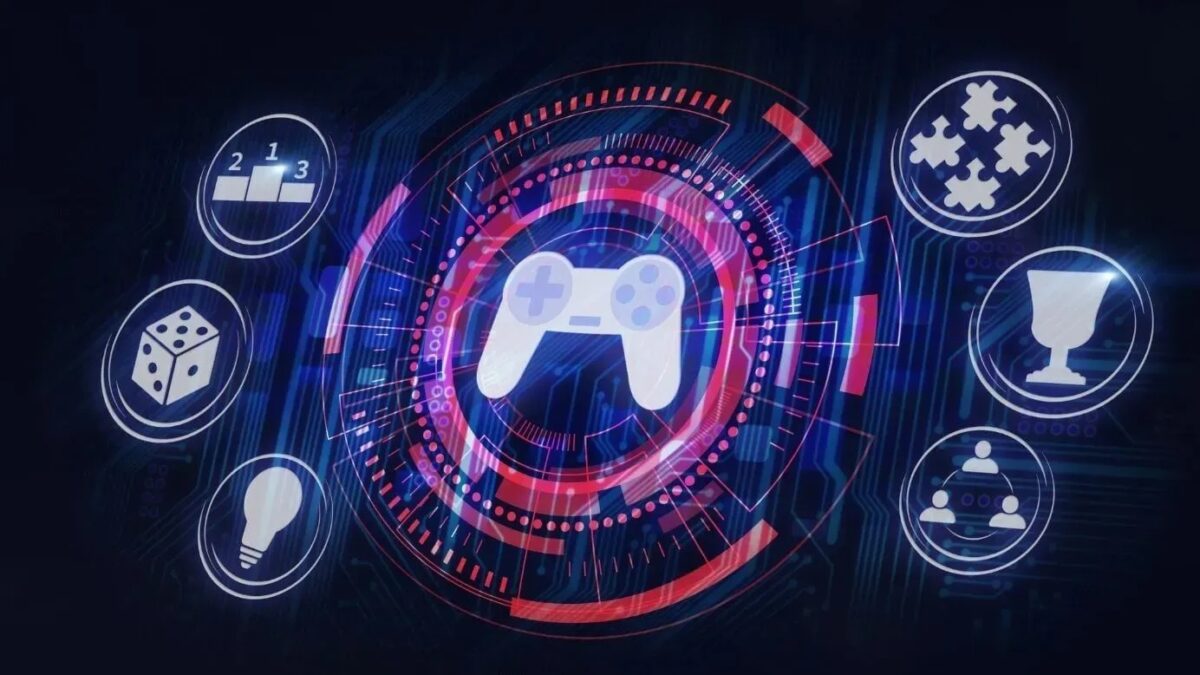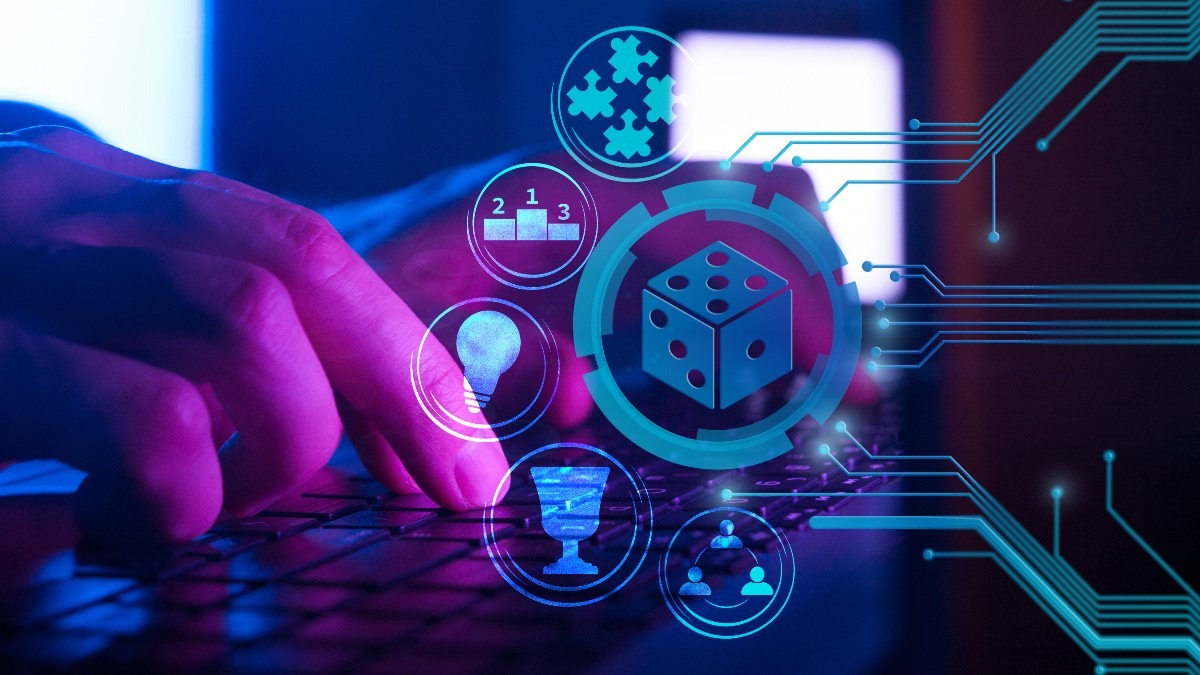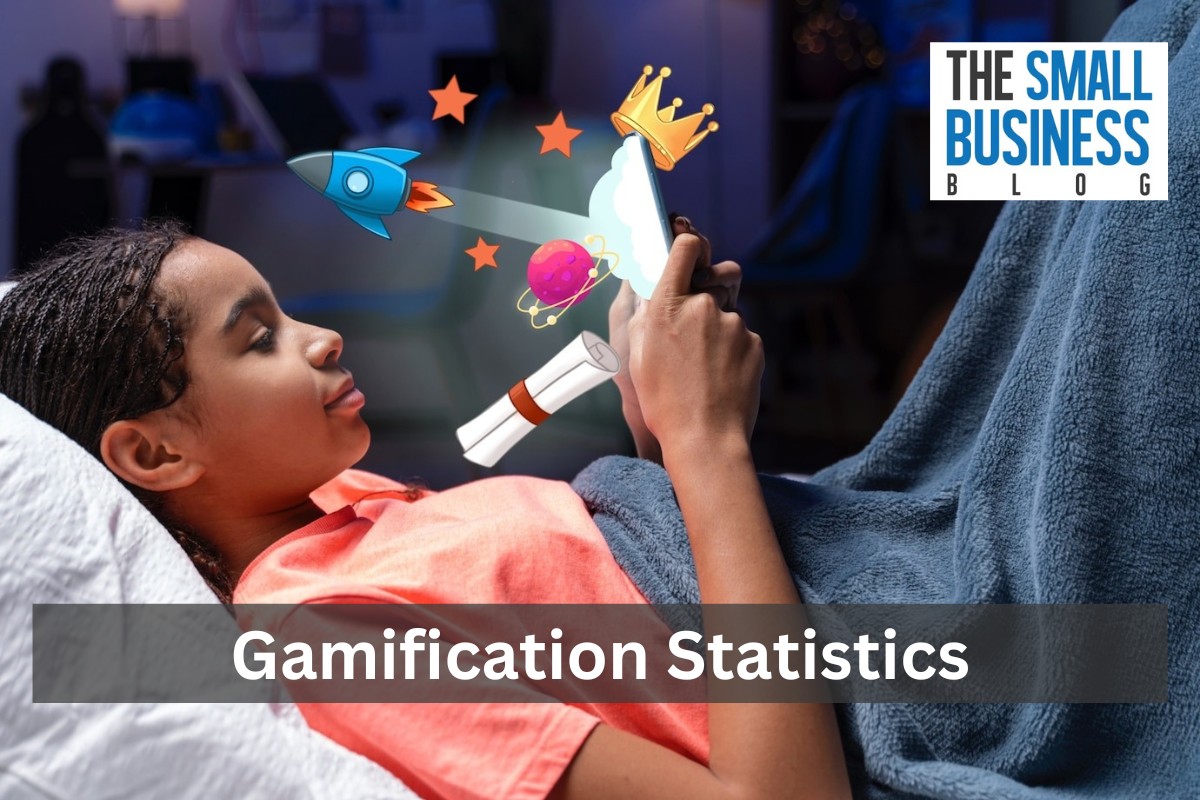The truth is that gamification is on the rise as you will soon find out when you read the following gamification statistics.
In recent years, we’ve seen gamification used in a variety of contexts, from education to marketing to customer service.
And as the popularity of gamification continues to grow, so does the amount of data available on its effectiveness.
If you’re looking for ways to improve employee engagement, productivity, or learning, gamification is a powerful tool that can help you achieve your goals across learning and business operations.
In the following article, we’ll take a deep dive into the statistics about gamification and discuss what they mean for the future of gamification.
We’ll also explore some of the risks associated with gamification and how to mitigate them.
Whether you’re a veteran gamification practitioner or you’re just getting started, this article is for you.
Read on to learn more about the latest statistics about gamification and how they can help you achieve your goals.
Post Contents
- 1 Key Statistics
- 2 Top Gamification Statistics in 2024
- 2.1 1. The Global Gamification Market Is Currently Valued at $11.94 Billion.
- 2.2 2. The Gamification Market Is Expected to Grow at A CAGR of 29.15% Between 2022 and 2027.
- 2.3 3. 70% of Forbes Global 2000 Organizations Are Using Some Form of Gamification.
- 2.4 4. 85% of Employees Are Shown to Be More Engaged Through Gamification.
- 2.5 5. 90% of Survey Participants Said They Think that Gamified Learning Is Effective.
- 2.6 6. Gamification Can Increase Company Productivity by Up to 50%.
- 2.7 7. Conversion Rates for Sites that Use Interactive Content Are Almost Six Times Higher than Websites without It.
- 2.8 8. 72% of Employees Said that Gamification Motivates Them to Work Harder.
- 2.9 9. 71% of Employees Believe that Gamification Leads to An Increase in Energy Levels.
- 2.10 10. 66% of Employees Say that Gamification at Work Reduces Their Stress Levels.
- 2.11 11. Gamification Can Result in 14% Higher Scores on Skill-Based Tests, and 11% on Factual Knowledge Tests.
- 2.12 12. Learner’s Recall Is Boosted by 90% when Applying Interactive Simulation Content.
- 2.13 13. Only 3% of People Are Unproductive During a Gamified Training Experience.
- 2.14 14. Using Gamification Can Enhance Customer Loyalty by Up to 30%.
- 2.15 15. Call Center Gamification Can Boost Customer Satisfaction by Up to 10%.
- 2.16 16. Marketing Gamification Can Increase Brand Awareness by Up to 50%.
- 2.17 17. Employee Retention Is Improved with Gamification as 69% of Employees Say They Will Stay with Their Company if It’s Used.
- 2.18 18. Most Instructors Think that Gamified Learning Enhances Student Motivation.
- 2.19 19. In 2018, It Was Found that 73% of Hr and Business Leaders Said Gamified Learning Is Effective.
- 2.20 20. In Terms of Ineffectiveness, 57% of Employees Believe Gamification Is Merely a Trend.
- 2.21 21. 63% of Company Owners Said that Implementing Gamification Is Too Complex.
- 2.22 22. 70% of Gamification Projects Failed in 2017.
- 3 FAQs
- 4 Conclusion
- 5 Sources
Key Statistics
- The global gamification market is currently valued at $11.94 billion.
- The gamification market is expected to grow at a CAGR of 29.15% between 2022 and 2027.
- 70% of Forbes Global 2000 organizations are using some form of gamification.
- 85% of employees are shown to be more engaged through gamification.
- 90% of those survey participants said they think that gamified learning is effective.
- Gamification can increase company productivity by up to 50%.
- Conversion rates for sites that use interactive content are almost six times higher than websites without it.
- 71% of employees believe that gamification leads to an increase in energy levels.
- 66% of employees say that gamification at work reduces their stress levels.
Top Gamification Statistics in 2024

1. The Global Gamification Market Is Currently Valued at $11.94 Billion.
Statista shows that the worldwide gamification market is valued at nearly $12 million (USD).
The expected market value is expected to be over $22 million (USD) by the end of 2024.
Since it’s set to grow at a fast pace, the gamification market is expected to reach $96.8 billion (USD) by 2030.
(Precedence Research, Statista)
2. The Gamification Market Is Expected to Grow at A CAGR of 29.15% Between 2022 and 2027.
Between 2022 and 2027 the gamification market is expected to see a CAGR of 29.15%.
The year-over-year growth rate for 2023 is expected to reach 21.68%.
This market has an accelerating growth momentum, according to data, as it’s expected to grow by nearly $35 million (USD) in this same period.
(Technavio)
3. 70% of Forbes Global 2000 Organizations Are Using Some Form of Gamification.
A YouGove survey revealed that roughly 70% of Global 2000 companies have already implemented some form of gamification.
Furthermore, companies that are using gamification are seeing up to 7x higher conversion rates.
(YouGov)
4. 85% of Employees Are Shown to Be More Engaged Through Gamification.
Studies have shown that 85% of employees are more engaged when gamification is used in work training programs.
It shows that even adult learners retain more through gamification solutions in workplace training.
(LXA)
5. 90% of Survey Participants Said They Think that Gamified Learning Is Effective.
In a Deloitte survey, 90% of employee respondents said that they felt more productive with gamification implementation in the workplace.
This relates to gamified learning being more effective than without it.
(LXA)
6. Gamification Can Increase Company Productivity by Up to 50%.
In 2019, a study revealed that gamification increased overall productivity in companies that were using it by 50%.
Likewise, employee engagement was boosted by 60%. Likewise, 86% of younger job applicants feel that it’s fun and enjoyable to have gamification solutions.
(FinancesOnline)
7. Conversion Rates for Sites that Use Interactive Content Are Almost Six Times Higher than Websites without It.
In an analysis of websites and conversion rates it was found that websites that use interactive content experience 6x the conversion rates of websites without it.
Interactive content is part of the gamification market. Are you using interactive content on your sites?
(FinancesOnline)
8. 72% of Employees Said that Gamification Motivates Them to Work Harder.
If you need proof that gamification shows promise in the workplace, the fact that 72% of surveyed employees said it motivates them to work harder and complete tasks with more efficiency.
The truth is that you can gamify virtually anything.
(LinkedIn)
9. 71% of Employees Believe that Gamification Leads to An Increase in Energy Levels.
Not only are employees saying they work harder, get more done, and feel more productive at work, but they also feel more energized.
In fact, 71% of employees said that gamification results in a boost in energy levels.
(HubSpot)
10. 66% of Employees Say that Gamification at Work Reduces Their Stress Levels.
Gamification is believed to make work more fun, help productivity, raise energy levels, and even reduce stress in the workplace.
According to one survey, 66% of employee respondents said gamification in the workplace helped to reduce stress levels.
(FinancesOnline)
11. Gamification Can Result in 14% Higher Scores on Skill-Based Tests, and 11% on Factual Knowledge Tests.
In the educational realm, adult learners are benefiting from gamification.
Consequently, gamified environments have boosted skill-based tests by 14% and knowledge tests by 11% among adult learners.
(LXA)
12. Learner’s Recall Is Boosted by 90% when Applying Interactive Simulation Content.
Generally, learners only recall about 20% of what they hear and only 10% of what they read.
However, when simulation content (gamification) is applied that figure is boosted to 90% in learner recall.
This is what interactive content can do.
(Learn Dash)
13. Only 3% of People Are Unproductive During a Gamified Training Experience.
Studies have shown that not only are people more productive in the gamified environment, only 3% of people are not productive during gamified training programs.
Therefore, we can safely assume that more people are productive when gamified solutions are present.
(LXA)
14. Using Gamification Can Enhance Customer Loyalty by Up to 30%.
In the business and customer service realm, gamification is shown to boost customer loyalty by up to 30%.
In fact, this is revealed in data from Walgreens and eBay, both of which have experienced a 30% increase in customer engagement and loyalty.
(Reloadly Blog)
15. Call Center Gamification Can Boost Customer Satisfaction by Up to 10%.
The element that is giving customer satisfaction this nice boost is gamification used to provide feedback, motivate call center employees, and overall measure their performance.
In fact, customer-centric organizations are getting a 10% boost in customer satisfaction compared to those who don’t use gamification.
(Plecto)
16. Marketing Gamification Can Increase Brand Awareness by Up to 50%.
Gamification solutions are being used in marketing, which has shown a lot of promise.
That promise is to improve brand awareness by up to 50% than without marketing gamification.
Marketing gamification is also improving lead generation, site performance, customer retention, user experience, customer acquisition, and customer satisfaction.
(Similarweb)
17. Employee Retention Is Improved with Gamification as 69% of Employees Say They Will Stay with Their Company if It’s Used.
According to data, 69% of employees responded to a survey stating that they would plan to stay with their current job for over three years if gamification is implemented.
Making work more interesting, challenging, and engaging will help companies retain top performers and talent.
(LinkedIn 2)
18. Most Instructors Think that Gamified Learning Enhances Student Motivation.
A North American survey discovered that nearly 90% of instructor respondents feel that using game-based learning boosts student motivation and it also fosters their creativity.
Furthermore, gamified learning helped show an average improvement in test scores of 34% among students who used this kind of learning.
(Gitnux)
19. In 2018, It Was Found that 73% of Hr and Business Leaders Said Gamified Learning Is Effective.
A 2018 Deloitte report revealed that 73% of surveyed participants among 10,000 HR and business leaders think that the game-based learning ideal is effective for training employees.
Likewise, the recruitment process has also been improved due to gamification at 38% popularity.
(Gitnux)
20. In Terms of Ineffectiveness, 57% of Employees Believe Gamification Is Merely a Trend.
When we take a look at the other side of the coin, we find that 57% of surveyed employees believe that the idea of gamification in the workplace is a passing trend or fad.
Another 24% said they don’t think it’s effective. In fact, they believe it’s a form of manipulation or at least a waste of time.
(Gitnux)
21. 63% of Company Owners Said that Implementing Gamification Is Too Complex.
Another issue stacked against gamification is that 63% of business owners believe that implementing gamification systems is much too complex.
Why? They cited that it costs too much money and it requires excessive technical knowledge to implement and use.
(Gitnux)
22. 70% of Gamification Projects Failed in 2017.

In 2017, Gartner reported that over 70% of gamification projects failed that year because of insufficient implementation and lack of long-term engagement.
So, it’s unlikely that the implementation of gamification was at fault in these instances.
(Gitnux)
FAQs
What Is Gamification?
Gamification is defined as the application of gaming elements (game design) and the principles of gaming to non-gaming constructs.
This can be done to motivate people to take desired actions, to make tasks more engaging, or to simply make things more fun.
What Are the Benefits of Gamification?
Gamification can offer a number of benefits, including:
• Increased engagement
• Improved motivation
• Enhanced learning
• Increased productivity
• Reduced stress
• Improved customer satisfaction
What Are the Different Types of Gamification?
Gamification comes in a variety of types.
The most commonly used include the following:
• Points and rewards: This is one of the most basic forms of gamification and involves giving people points or rewards for completing tasks or achieving goals.
• Leaderboards: Leaderboards allow people to see how they compare to others, which can provide a sense of competition and motivation.
• Levels and progression: Levels and progression systems give people a sense of accomplishment as they progress through a task or goal.
• Challenges: Challenges provide people with a specific goal to achieve, which can help to keep them engaged.
• Virtual rewards: Virtual rewards, such as badges or trophies, can provide people with a sense of accomplishment and recognition.
How Do I Implement Gamification?
There are a few things to keep in mind when implementing gamification:
• Start small: Don’t try to implement gamification too broadly or too quickly. Start with a small project or task and see how it goes.
Make it fun: Gamification should be fun and engaging. If it’s not, people won’t be motivated to participate.
• Use the right elements: Not all gamification elements are created equal. Choose the elements that are most likely to motivate your audience.
• Track your results: Keep track of your results so you can see what’s working and what’s not. This will help you to improve your gamification strategy over time.
What Are the Risks of Gamification?
There are a few risks associated with gamification, including:
• Over-simplification: Gamification can sometimes oversimplify tasks or goals, which can lead to boredom or frustration.
• Addiction: Gamification can be addictive, so it’s important to use it in moderation.
• FOMO: Gamification can create a sense of FOMO (fear of missing out), which can lead to anxiety or stress.
• Data privacy: Gamification often collects data about users, which can raise privacy concerns.
What Are the Future Trends in Gamification?
The future of gamification is bright.
As more and more people become familiar with game-design elements, we can expect to see gamification used in even more contexts.
Some of the future trends in gamification include:
• The use of artificial intelligence (AI): AI can be used to create more personalized and engaging gamification experiences.
• The use of augmented reality (AR) and virtual reality (VR): AR and VR can be used to create more immersive and engaging gamification experiences.
• The use of blockchain: Blockchain can be used to create more secure and transparent gamification experiences.
Conclusion
Gamification is a robust tool that can be used to improve engagement, productivity, and learning.
The statistics we discussed in this article show that gamification is effective in a variety of contexts.
However, it’s important to use gamification in moderation and to be aware of the risks associated with it.
In the future we will see more usage of AI, VR, AR, and other elements of gamification as it’s implemented.
This will evolve along with the changing education and learning sector and the overall workforce.
Over the years gamification has been implemented in non-gaming sectors, it has had its successes and failures.
Without failure, success would not have occurred at the level it’s at today.
We hope you have learned some useful information from these gamification statistics.






























